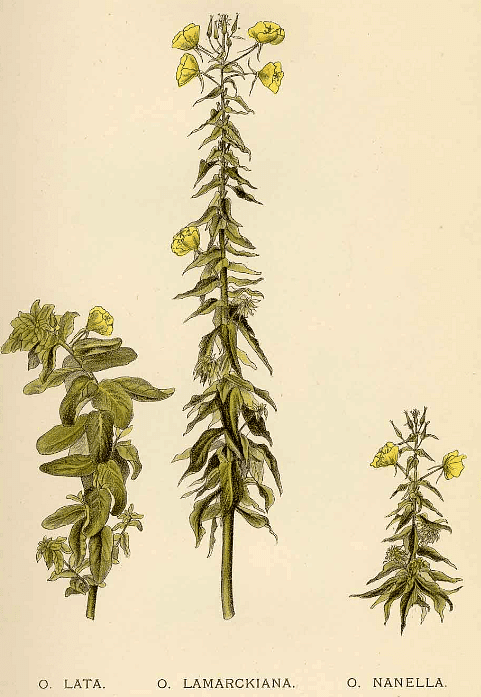Mutation Theory of Evolution (Post- Darwinian) | Anthropology Optional for UPSC PDF Download
Introduction
- Hugo de Vries, a prominent Dutch botanist (1848-1935), contributed significantly to the field of evolutionary biology by presenting his ideas on the formation of new species in 1901. De Vries was one of the scientists who independently rediscovered Mendelism, and his work addressed some of the criticisms found in Darwin's theory of evolution.
- De Vries proposed that new species are not formed through gradual, continuous changes but rather through sudden, distinct variations, which he termed as "mutations." He further explained that these mutations are inheritable traits that are passed down through successive generations, leading to the formation of new species.

Experiments Conducted by Hugo de Vries
- Hugo de Vries conducted experiments on a plant called Oenothera Lamarckiana, or Evening Primrose, and discovered several unusual types. When these plants were self-pollinated and their seeds allowed to grow, the majority of the resulting F1 plants resembled the parent plants, but some were different.
- When these different plants were self-pollinated and their seeds sown, most offspring were similar to the parents, but a few were even more distinct, and this pattern continued across generations. These plants seemed to be new species, leading de Vries to propose that new inherited traits could suddenly appear without any prior indication in the population.
- De Vries argued that mutations, rather than minor heritable variations as proposed by Darwin, drive evolution. Mutations are random and directionless, while Darwin's variations are small and directional. According to Darwin, evolution is a gradual process, but de Vries believed that large single-step mutations, or saltations, cause the formation of new species.
Salient Features of the Mutation Theory
Hugo de Vries (1901) proposed the mutation theory as an explanation for the process of evolution. According to this theory, evolution occurs in a discontinuous manner through mutations, which serve as the foundation for evolutionary change. The main aspects of the mutation theory are as follows:
- The driving force behind evolution is mutations, which are abrupt and discontinuous variations in organisms.
- Mutations occur suddenly and have an immediate effect on the organism.
- Contrary to Darwin's continuous variations, mutations do not center around the average or typical characteristics of a species.
- Identical mutations can manifest in multiple individuals belonging to the same species.
- All mutations can be passed down through generations.
- Mutations can arise in various directions, providing diverse possibilities for evolutionary change.
- Nature selects beneficial mutations, while lethal mutations are eliminated. However, neutral or mildly detrimental mutations may persist in offspring.
- The accumulation of variations can lead to the formation of new species, and in some cases, a single mutation can result in the creation of a new species.
- Evolution, as per the mutation theory, is an irregular and discontinuous process.
Conclusion
In conclusion, Hugo de Vries made significant contributions to the field of evolutionary biology by proposing the mutation theory, which serves as an alternative explanation to Darwin's theory of evolution. According to de Vries, new species are formed through sudden, inheritable mutations rather than gradual, continuous changes. His experiments on the Evening Primrose plant provided evidence for his mutation theory and suggested that evolution is an irregular and discontinuous process. While both Darwin's and de Vries' theories have their merits, it is important to acknowledge the role of mutations in shaping the course of evolution and the formation of new species.
Frequently Asked Questions (FAQs) for Post- Darwinian
What is Hugo de Vries' mutation theory?
Hugo de Vries' mutation theory proposes that new species are formed through sudden, inheritable mutations rather than gradual, continuous changes. According to this theory, evolution occurs in a discontinuous manner, with mutations serving as the foundation for evolutionary change.
How did Hugo de Vries' experiments on Evening Primrose plants support his mutation theory?
De Vries conducted experiments on Evening Primrose plants and discovered several unusual types. When these plants were self-pollinated, most offspring resembled the parent plants, but some were different. This pattern continued across generations, with some offspring being even more distinct. These plants seemed to be new species, leading de Vries to propose that new inherited traits could suddenly appear without any prior indication in the population, supporting his mutation theory.
How does the mutation theory differ from Darwin's theory of evolution?
While Darwin's theory of evolution focuses on gradual, continuous changes and small, directional variations, de Vries' mutation theory emphasizes sudden, discontinuous variations called mutations. According to Darwin, evolution is a gradual process, while de Vries believed that large single-step mutations, or saltations, cause the formation of new species.
|
108 videos|243 docs
|


















